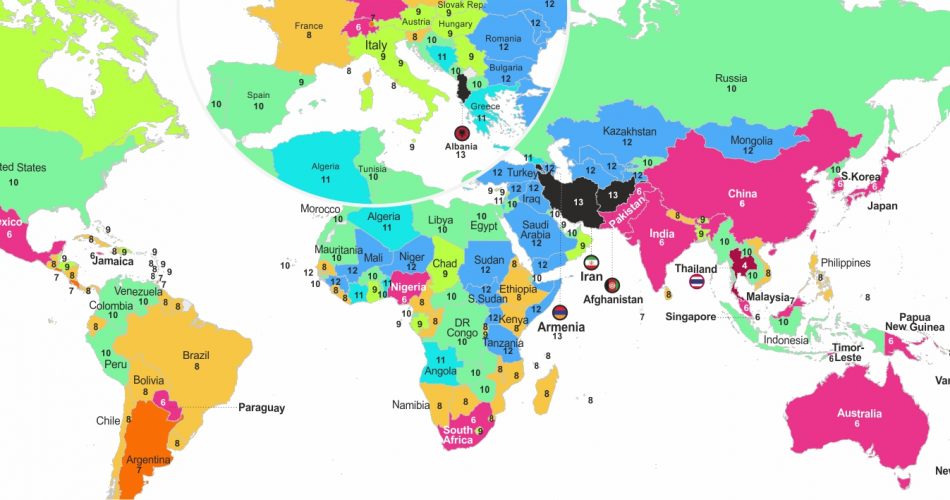
Summer time is here! A time when students, families, and educators eagerly anticipate a well-deserved period of fun and relaxation. It’s a time to recharge our batteries, embark on new adventures, and forge unforgettable moments. But have you ever found yourself curious about the varying lengths of this cherished break from school? Join us as we visualize the duration of summer vacations in different parts of the world.
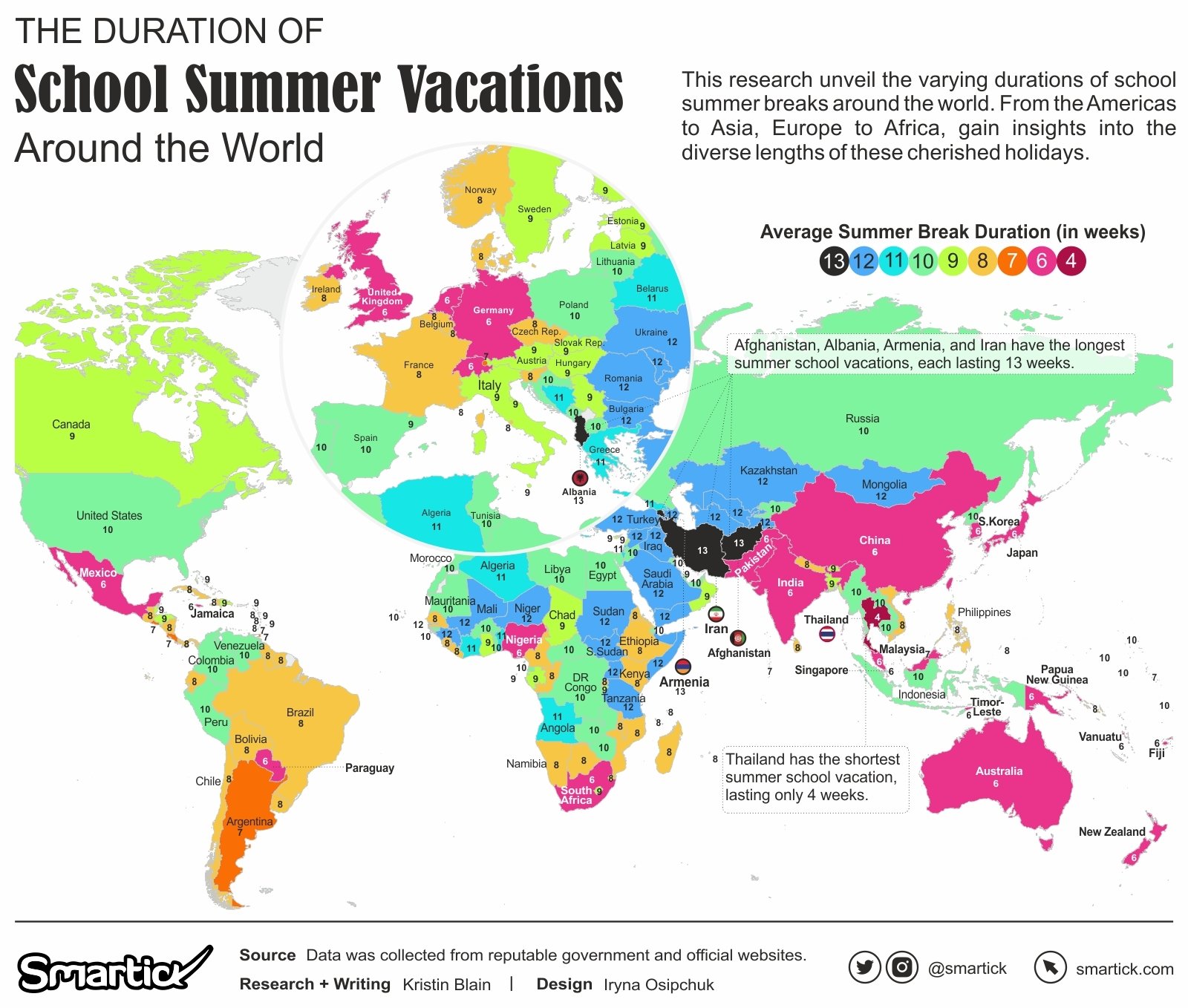
It is worth noting that the research for this article has been diligently conducted by the Smartick.com team, drawing data from reputable and official government sources. However, as with any research, there may be slight inconsistencies. Therefore, we warmly invite our readers to provide us with their valuable feedback and insights, helping us refine and improve our understanding of summer break durations worldwide. Let’s dive in and unravel the captivating tapestry of summer vacations in different regions of the world.
School Summer Vacations in the Americas
In the Americas, summer vacations offer a range of experiences and opportunities for both relaxation and adventure.
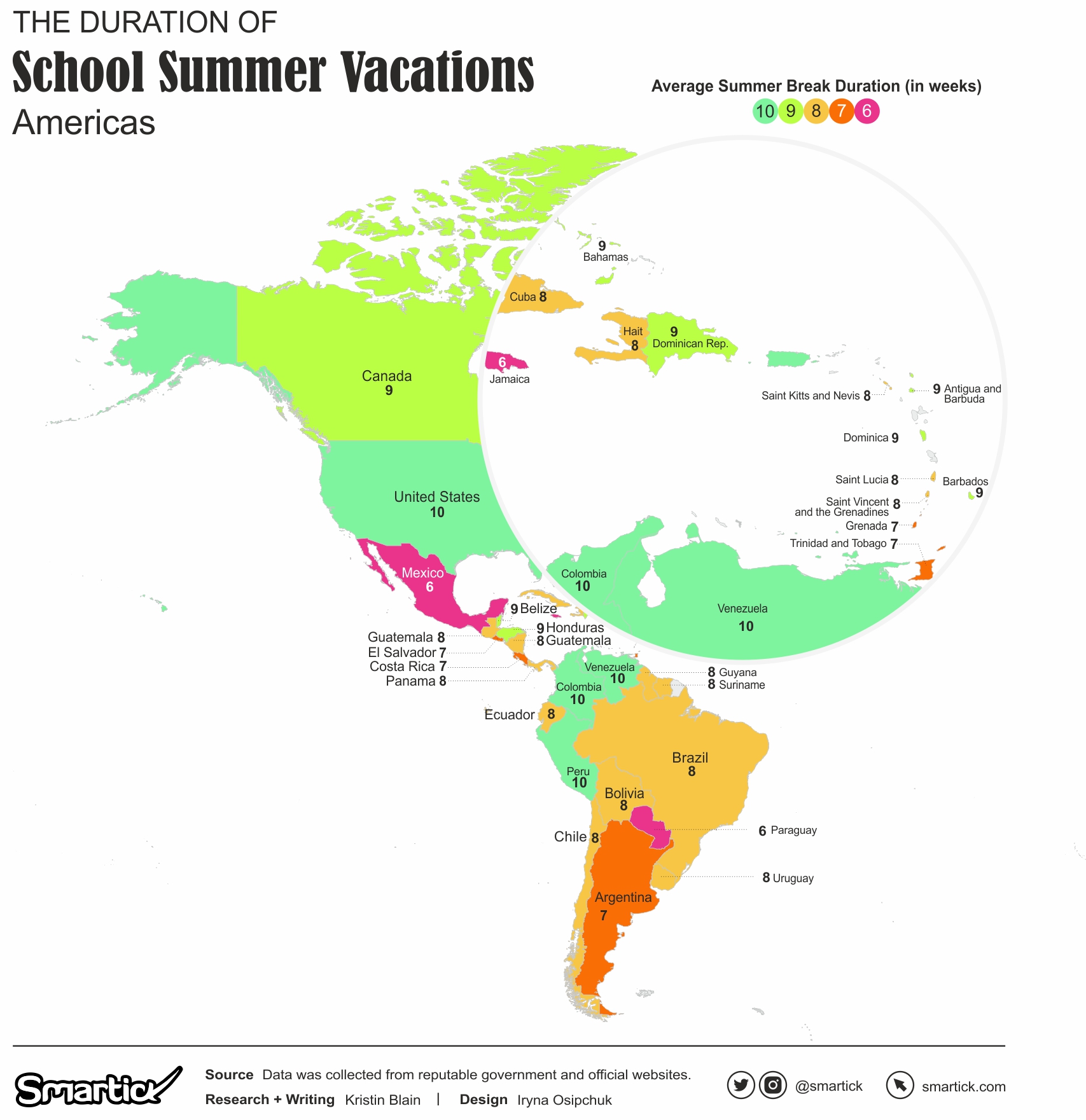
In North America, the duration of the summer break typically ranges from one and a half to two and a half months, typically falling between June and August. While exact dates may differ due to regional climate variations and local customs, many U.S. schools follow a traditional calendar with around ten weeks of vacation, while others opt for shorter, more frequent breaks throughout the year. Latin America, on the other hand, celebrates summer vacations between November and February, lasting between 7 to 10 weeks. This vibrant period is marked by lively festivals, cultural events, and beach parties, offering families a chance to bond and explore the region’s stunning coastlines and beautiful beaches. Additionally, attending festivals and engaging in outdoor activities such as hiking in the Andes or exploring the Amazon rainforest add a touch of excitement to the Latin American summer experience.
School Summer Vacations in Europe
Europe’s school summer vacation varies in duration across countries and regions, as indicated by official data from the European Commission’s publication on education systems in Europe. Generally, the summer break in Europe spans from late June to early September, lasting between six to fourteen weeks, depending on national and regional educational practices.
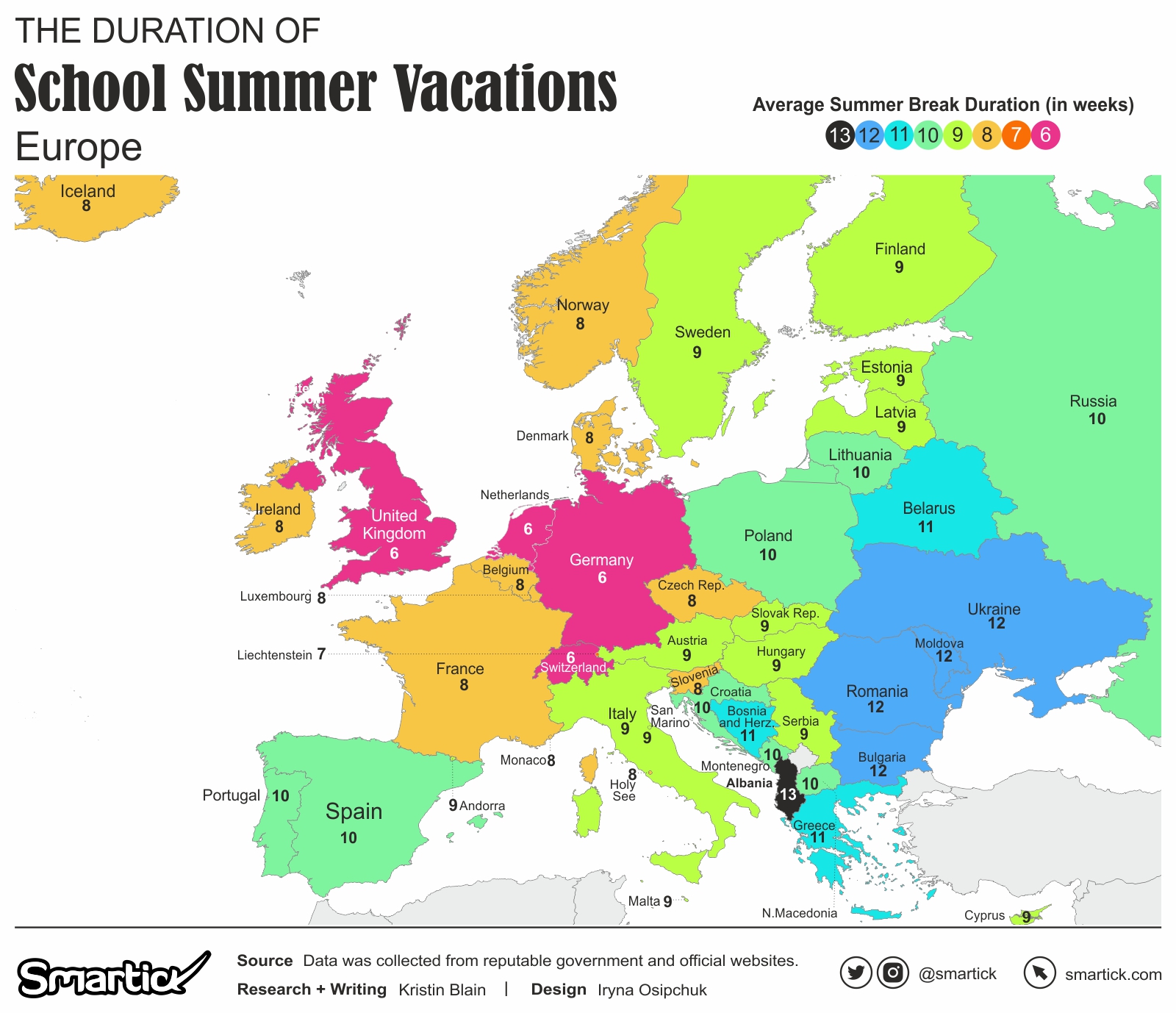
During this extended break from school, European students and families engage in a wide range of activities. Many children and teenagers participate in summer camps, which offer a variety of educational, sports, and recreational programs. These camps provide opportunities for personal development, fostering new skills, and promoting social interaction with peers.
Moreover, local communities and municipalities organize summer programs and activities for students. These initiatives include sports tournaments, arts and crafts workshops, and cultural events aimed at keeping young minds engaged and active during the vacation period. Additionally, some schools may offer optional summer courses or academic programs for students who wish to deepen their knowledge or catch up on certain subjects.
While travel and vacations are popular during the summer break, focusing on the educational aspect of the vacation highlights the efforts made by schools and communities to provide enriching experiences for students. These activities aim to strike a balance between leisure and educational opportunities, ensuring that students continue to learn and develop during the summer months.
School Summer Vacations in Asia & Oceania
For Asia and Oceania, summer vacation durations vary across different countries and regions. The summer break in this region typically lasts for about one to three months.
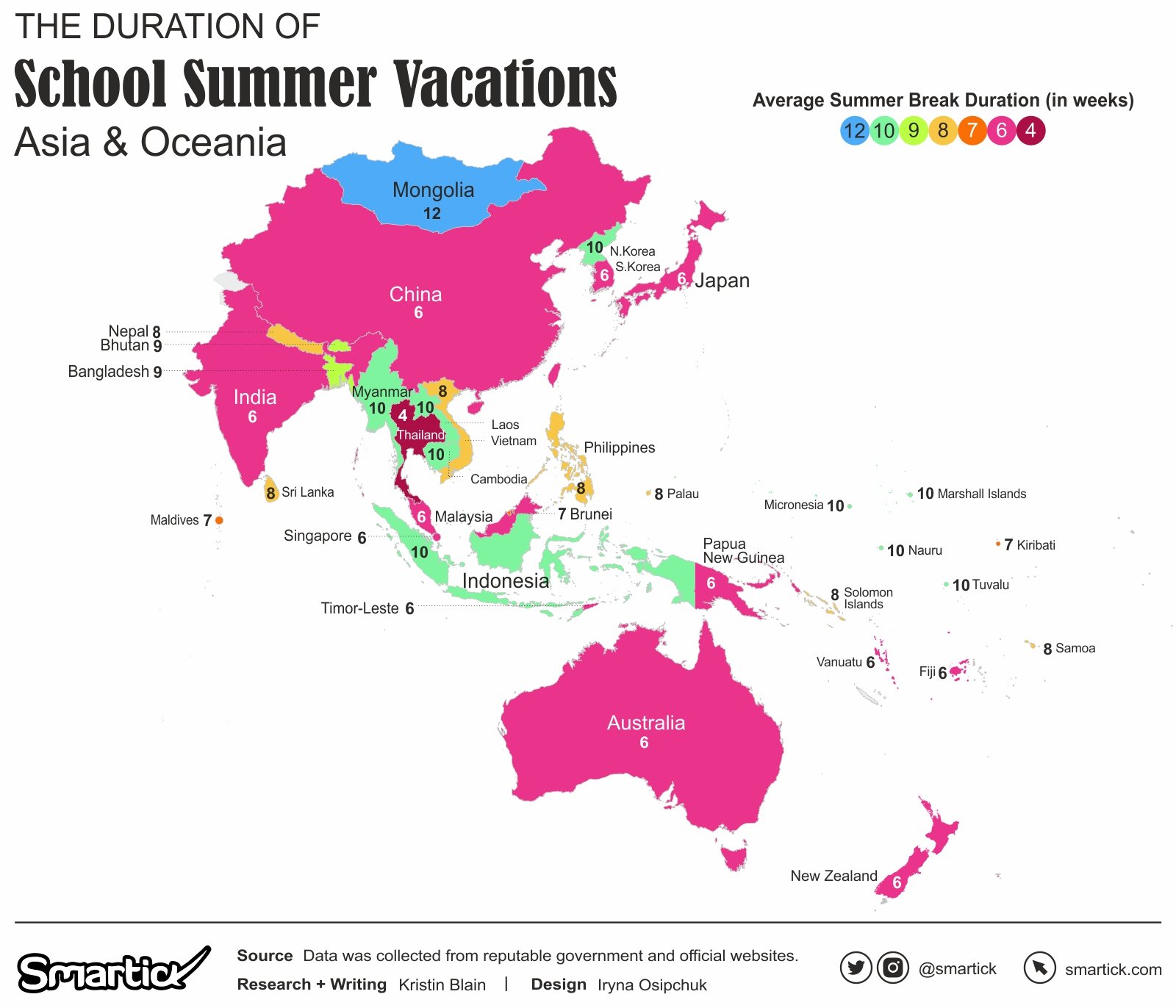
During the summer break in Asia and Oceania, families and individuals have a wide range of activities to choose from. Many people take the opportunity to explore the natural wonders and cultural attractions of the region. From the pristine beaches of Southeast Asia to the lush rainforests of Oceania, there are ample opportunities for beach vacations, snorkeling, diving, and eco-tourism experiences.
Moreover, Asia and Oceania are known for their rich cultural heritage, and summer vacations provide a chance to immerse in local traditions and festivals. Festivals like Obon in Japan, Songkran in Thailand, or Hari Raya Aidilfitri in Malaysia offer vibrant celebrations with traditional music, dance, and delicious cuisine. Families often take this time to visit relatives, reconnect with their cultural roots, and participate in community events.
Additionally, summer break in Asia and Oceania provides an opportunity for students to engage in educational and enrichment activities. Some schools and organizations offer summer camps and workshops that focus on various subjects, including language learning, arts and crafts, sports, and STEM (Science, Technology, Engineering, and Mathematics) programs. These activities aim to foster personal growth, develop skills, and provide a well-rounded experience for students during the vacation period.
School Summer Vacations in Africa
In Africa, the duration and timing of summer vacations vary across different countries and regions. Due to the continent’s vast size and diverse climates, summer break periods can differ significantly. Generally, summer vacations in Africa occur during the months of December, January, and February, aligning with the southern hemisphere’s summer season.
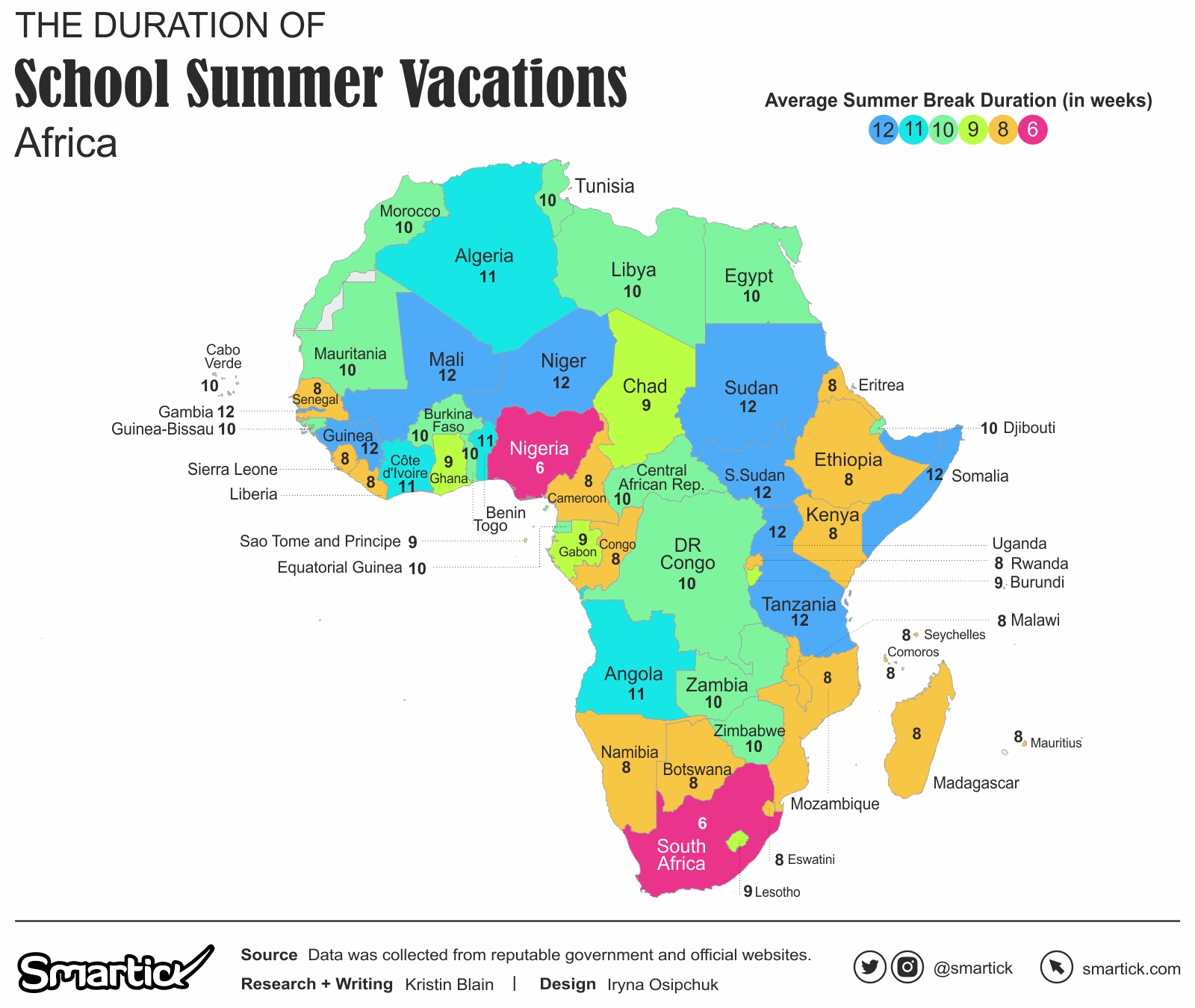
During this time, many African countries experience warm weather and school holidays. Families often take advantage of the summer break to embark on vacations and explore the unique natural landscapes and wildlife that Africa has to offer. Popular destinations include wildlife reserves and national parks, such as the Serengeti in Tanzania, Kruger National Park in South Africa, or the Maasai Mara in Kenya, where visitors can witness breathtaking wildlife migrations and go on safari adventures.
In addition to wildlife tourism, Africa’s diverse cultural heritage provides an opportunity for travelers to engage in cultural experiences during the summer break. Festivals showcasing traditional music, dance, and art often take place during this period, allowing visitors to immerse themselves in local traditions and customs.
It’s important to note that specific information regarding summer vacation duration and patterns in Africa can vary by country and region. Local education systems and cultural practices influence the timing and length of summer breaks across the continent.
School Summer Vacations in Middle East & Central Asia
In the Middle East and Central Asia, summer vacation durations can vary across countries and regions. While specific information may differ, it is common for summer breaks to occur during the months of June, July, and August. However, it’s important to note that the timing and length of summer vacations can be influenced by factors such as local educational systems, cultural practices, and religious holidays.
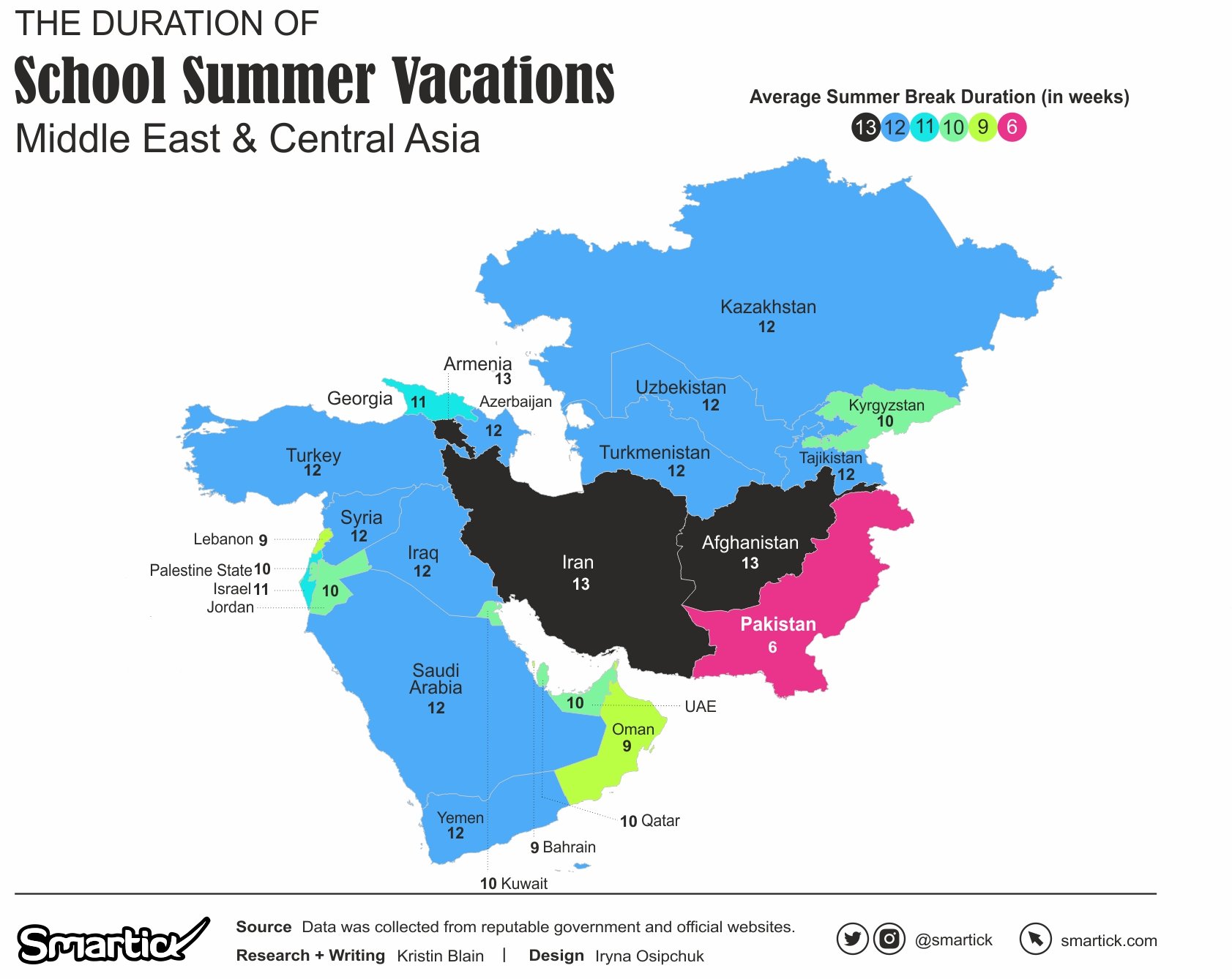
In the Middle East and Central Asia, summer vacation durations can vary across countries and regions. It can last in between 6 weeks like the case of Pakistan to 13 weeks like Iran and Afghanistan. While specific information may differ, it is common for summer breaks to occur during the months of June, July, and August. However, it’s important to note that the timing and length of summer vacations can be influenced by factors such as local educational systems, cultural practices, and religious holidays.
In conclusion, the duration of summer school holidays varies across regions, offering unique opportunities and challenges for students worldwide. An intriguing question arises regarding the impact of longer breaks on children’s academic performance. Extensive research and discussions have explored this topic, presenting differing viewpoints. Advocates argue that extended vacations provide valuable time for students to recharge and engage in alternative learning experiences outside the classroom. However, concerns regarding potential learning loss or the “summer slide” have also emerged. By delving into the relationship between vacation duration and academic performance, we can gain valuable insights into how educational systems can strike a balance between vacation time, continuous learning, and student achievement. This exploration is crucial for optimizing the educational experience and ensuring that students thrive academically, fostering a dynamic and effective approach to future summer breaks.

